Last year I set a goal to learn something new each month and ended out launching six new projects which I’ll recap along with what I learned below.
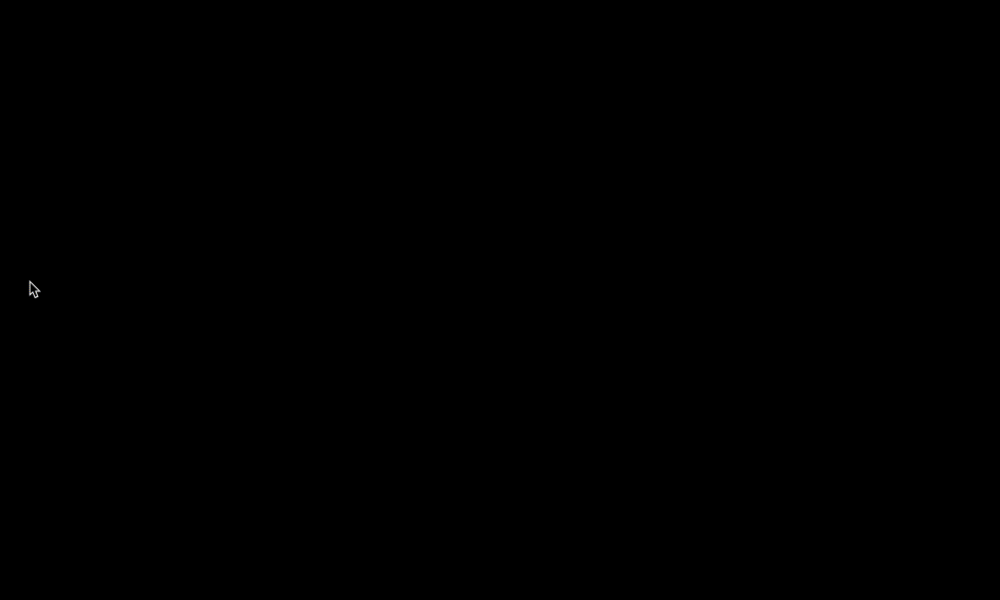 GIF flyover of my 2017 Projects. Find details of each project at the bottom of this post.
GIF flyover of my 2017 Projects. Find details of each project at the bottom of this post.
Looking back, it seems a little crazy to me that I managed to launch as much as I did while running a (more than) full time business, spending quality time with my family (I have two kids and a very patient wife), teaching as an adjunct professor, and consulting on the side.
It’s easy to think that not having enough time is what’s holding you back from launching your side projects. “If there were only more time” is the general excuse we give ourselves and we look for fancy apps or task management techniques to try and free up more space in our schedule.
However, one of the main things I’ve learned over the last year, is that time is not the primary issue. You have enough time; what you need is motivation.
The good news is that motivation can be “hacked.” I’ve learned a few ways to hack my motivation in 2017 and I want to share those with you.
👉 You must pick an idea you’re genuinely interested in
You simply can’t stay motivated about something you don’t care about so choose something that you’re excited to work on. When you feel inspiration strike around that idea, don’t let it pass, use it. Even if that means jotting down some quick notes while you’re in a meeting at work.
It’s important to grab ahold of those moments of inspiration to stay hungry and curious around your work.
🎁 Give yourself a time box to work in
For me, that meant shipping something every month. I tend to blow things up once I start working on them so this 30 day constraint really helped me rein that tendency in and spend my motivation efficiently.
It also gives you a chance to try out new ideas if one month’s idea turns out to be a dud. At least you didn’t waste a whole year on it.
📅 You need a public deadline for sharing your work
This is the big one. You will run out of “motivation fuel” towards the end of your project. (That last 10% is killer.) The only thing that will get you through a motivation slump is knowing there are people on the other side waiting to see what you built.
Another benefit of sharing your work is that it gives you a chance to get some supportive feedback for what you’re doing. The co-working space I work out of, Atlas Local, has an office-wide event on the first Friday of every month. I used that event to present my project from the previous month and was always encouraged and supported by the generous folks who were there.
You’ll be surprised by how much support you’ll get for just stepping out there and sharing something you made.
Perhaps the most surprising part of this experiment for me was that, far from being burned out at the end, I feel even more motivated to ship more work in 2018.
I’d encourage you to hack your motivation in the new year and ship some of those ideas you’ve had lying around for a while. I’d love to hear about it if you try.
If you’re interested in the details of what I built in 2017, read on!
January Project: Pers0nal1ty.com
Visually compare the personality types of your group’s strongest and weakest traits
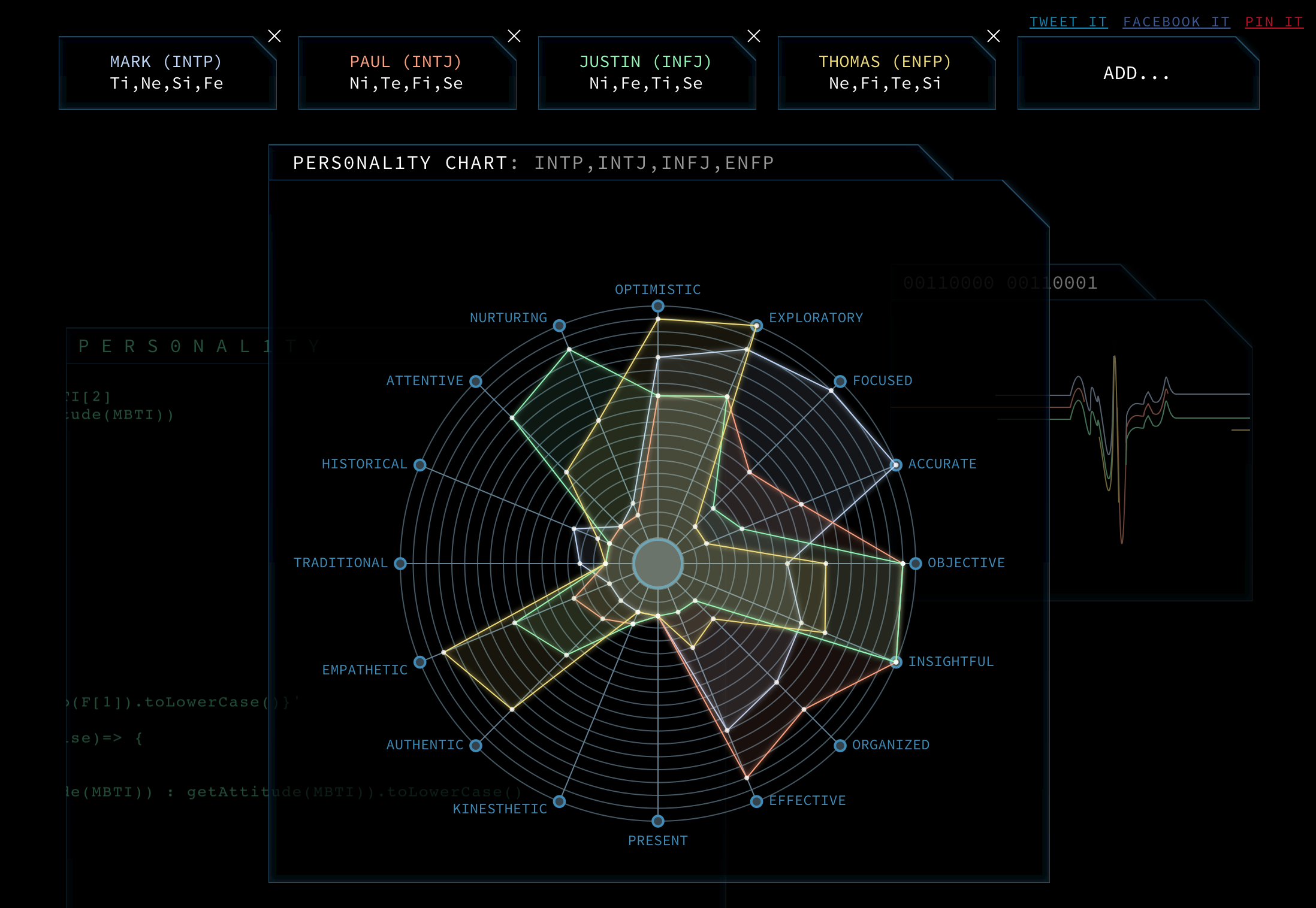
I’ve been interested in the Myers–Briggs Type Indicator (MBTI) for a while now. While I don’t see it as prescriptive or even all that scientific, it has been a helpful framework for empathizing with people who are different than I.
What many personality nerds don’t realize is that the MBTI system is based on something called Cognitive Functions. These functions were created by the father of modern phycology, Carl Jung, back in the 1920s. I wanted to dive a little deeper and learn more about that.
At the same time, I was watching HBO’s West World and saw this screen:
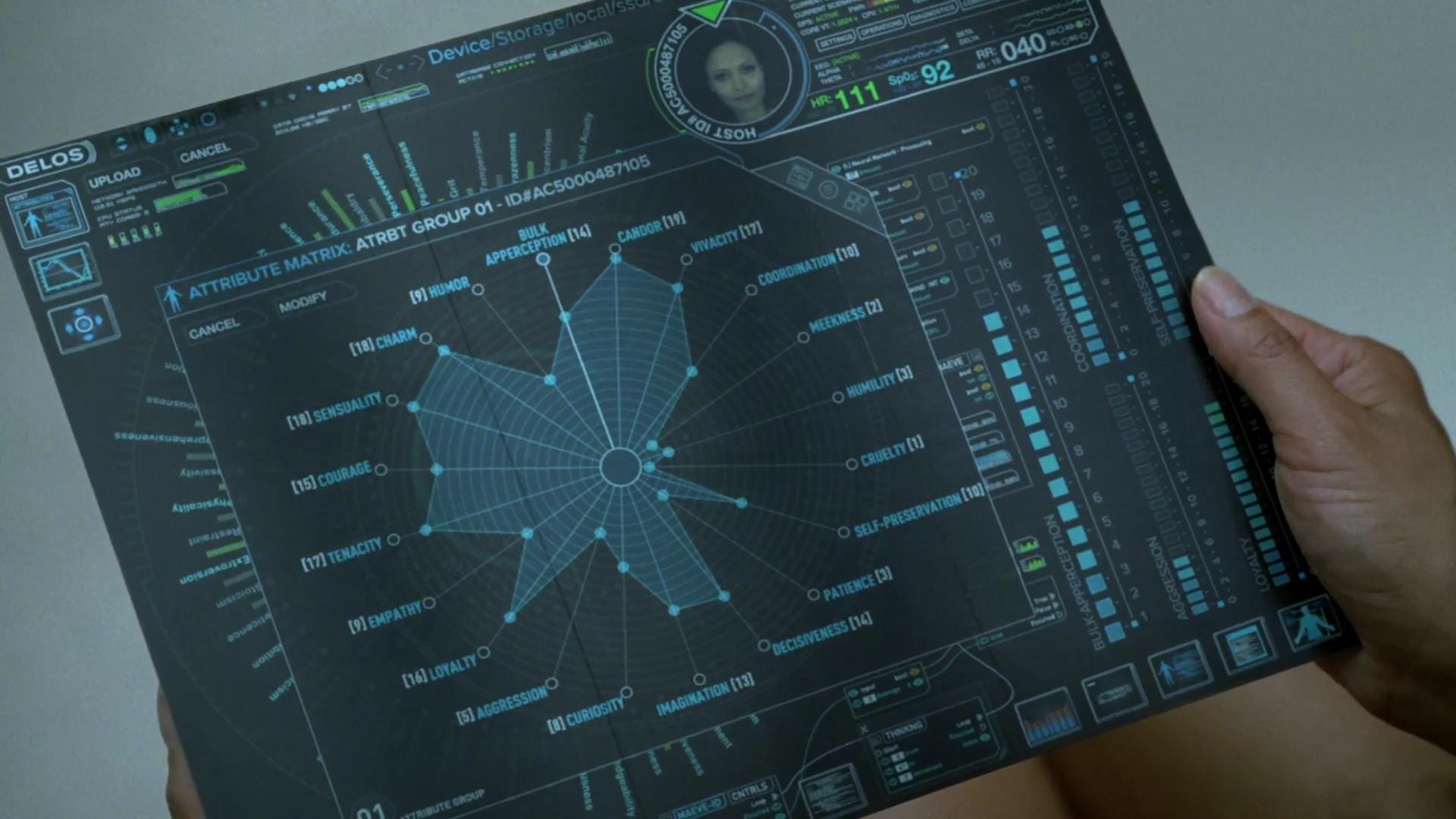
While I love this kind of Sci-Fi UIs, which is what immediately caught my attention, I thought, what if I could build a “host profile” of anyone based on their MBTI traits? Why not?
To prepare for this, I read the “MBTI Bible”, Gifts Differing by Myers and Briggs and started hacking on building out a system that could generate a radar chart based on the cognitive functions underlying the MBTI system.
In the end, I pivoted away from the West World UI a bit since I (and other beta testers) found a lot more utility in the ability to overlay multiple people on the radar chart to get a sense of chemistry amongst a group of people.
The results are really interesting if I do say so myself. Try entering you team’s personality types or you and your spouse:
👉 Check out Pers0nal1ty
February: Sheetcake Landing Page
The easiest way to create signup sheets online for anything
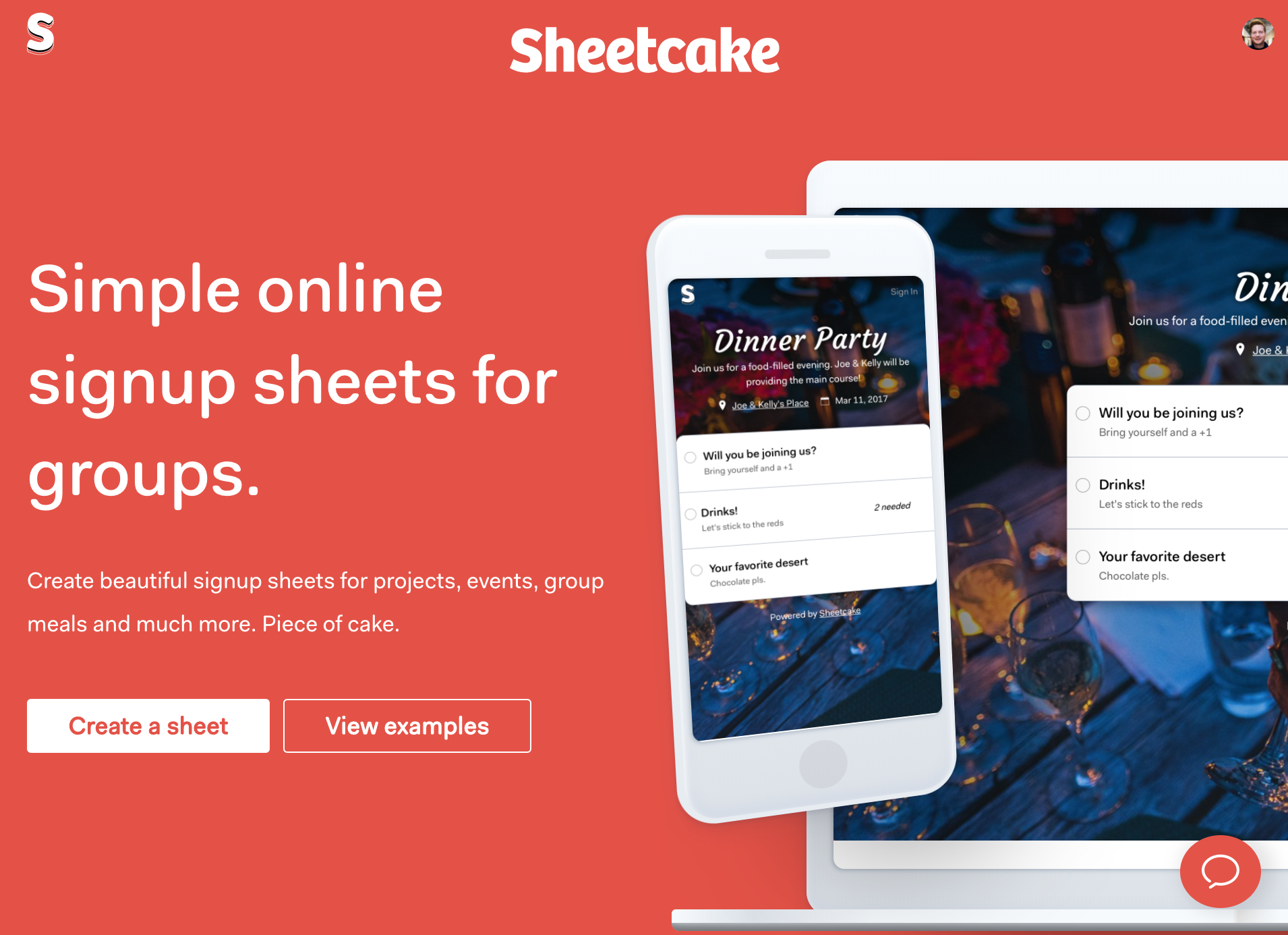 The Sheetcake Landing Page
The Sheetcake Landing Page
I’ve worked on Sheetcake for a few years now on the side. It has a very small set of loyal users (most of which know me or someone close to me).
Some fun facts about SheetCake:
I wrote the first version in 48 hours back in 2012 for a hackathon. Here’s a video of younger me demoing the 48-hour version
I’ve re-written it 4 times! The first version was in Backbone.js + Node.js. Second was Backbone + Marionette + Firebase. The third was React + Firebase (all in CoffeeScript) and the 4th and final version was ES6, React, and Firebase.
People who use Sheetcake tend to use it consistently for years; however, there is no business model.
Sheetcake actually works really well for certain types of things (like those Zero Day signups) so I wanted to create a landing page for it that marketed some of the benefits. I started from a template on this one but here’s where it landed.
👉 Check out Sheetcake
March: NeTi Chat Bot
Ask my extroverted assistant bot questions about me
 NeTi the Chat Bot
NeTi the Chat Bot
Early in the year, chatbots were all the rage. While I’ve never been optimistic that chatbots will go anywhere on their own, the conversational A.I. aspect of them was intriguing to me and I wanted to learn more about it.
I’m an introvert and generally pretty bad at sharing anything about myself so I thought it might be fun to create an extroverted bot that could answer simple questions about me.
NeTi get’s his name from the cognitive functions I would have if I were an extrovert.
The A.I. part of classifying the question intents is built with Wit.ai which made it pretty easy.
Don’t make NeTi too mad or he may lash out at you. 👿
👉 Check out NeTi
April: G.O.A.P.
Building Convincing A.I. with Goal-Oriented Action Planning
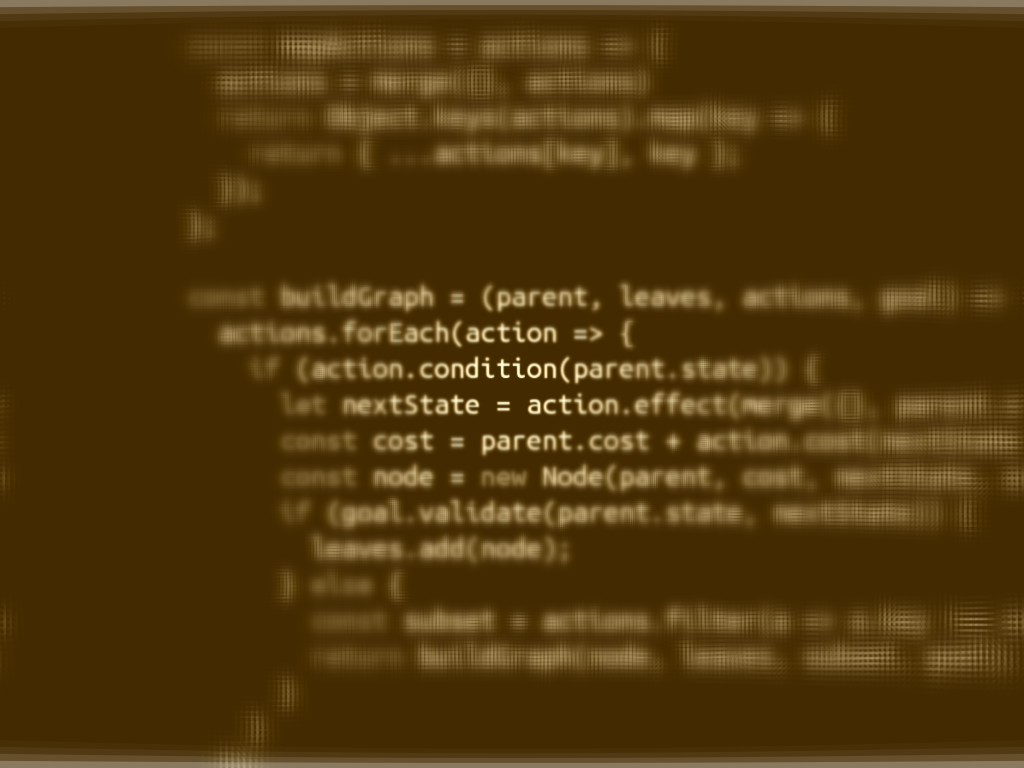 Screenshot of code with a tilt shift effect — why not?
Screenshot of code with a tilt shift effect — why not?
After coming across this article I was super intrigued by Goal Oriented Action Planning (GOAP) described in the context of a game with some nostalgia for me, F.E.A.R.
Having worked on several games with rudimentary A.I. in the past, I’d never come across this technique. I remember thinking that F.E.A.R’s A.I. was particularly impressive and lifelike.
After researching a bit more, the really compelling part about this methodology was not so much how convincing the results were, but how simple and elegant the solution was (especially compared to a more standard A.I. approach like Finite State Machines).
So for April’s project, I made a JavaScript library to explore GOAP. A basic implementation turned out to be surprisingly simple (only 58 lines of code!).
👉 Check out GOAP-JS
May: Goal Contracts
Sign accountability contracts for your goals.
 Goal Contracts With Build-in Accountability
Goal Contracts With Build-in Accountability
This is the month I started on the Whole 30 diet. I’d become complacent about my eating habits and it definitely was affecting my energy levels. Whole30 worked really well for me (I lost 18 pounds during the diet and a total of 35 more in the months following). Most of all, it really evened out my energy levels during the day and I felt much more motivated and focused.
Seeing the parallels between public commitment and motivation, I decided to explore the idea of “goal contracts” for May’s project.
👉 Check out Contracts
June — December: TiltMaps
Create unique map posters for your favorite places and memories
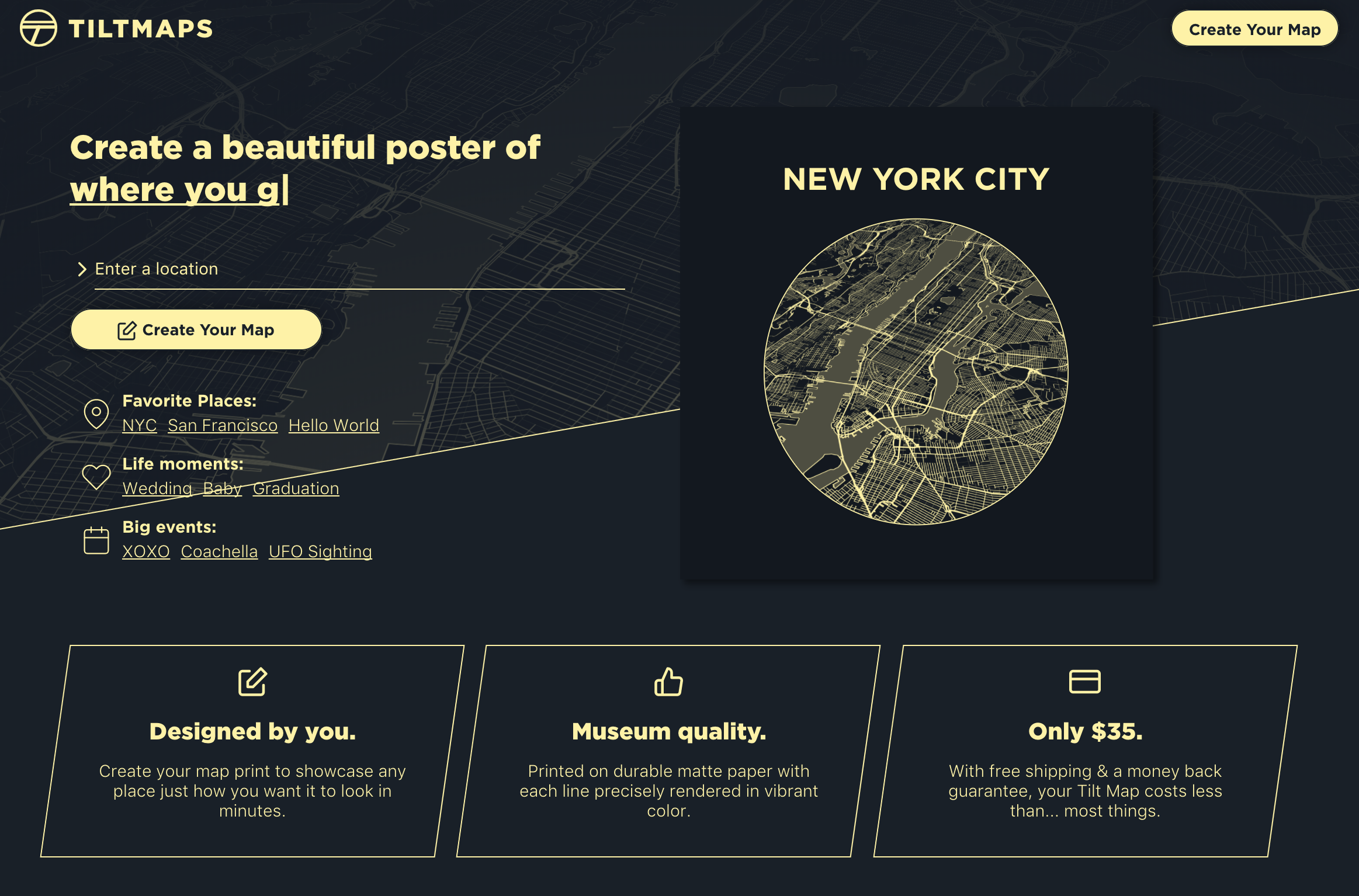 The TiltMaps Home Page
The TiltMaps Home Page
This is where everything pivoted. My goal for June was to make a product that people actually wanted to buy. One of my biggest weaknesses is sales and marketing so I wanted to learn more about that by building a product I could practice with.
I’ve always been interested in maps and generative art so creating a tool where you can create and purchase posters of your favorite locations was an intriguing idea.
This project was way too ambitious to complete in one month on the side so I decided to go all-in on TiltMaps for the rest of the year and work on a different angle of the product every month until launch. I found that chunking the various parts of a larger project into a month-long project was really helpful to actually get this done.
June-July: The Secret Sauce™️
Most of the first month was doing R&D to figure out if generating high-res, maps in 3D space was even possible at all. Generating a 300dpi map of any location in the world at a 3D angle is not something that any API or platform I found supported out of the box so I had to invent my own way of doing it. This took most of the month to figure out but it was surprisingly simple once I found the answer. After that, I built a rudimentary editor to start creating actual posters and ordered a couple of test prints.
August-September: The Proof of Concept (MVP)
In the next few months I built out a more consumer MVP of the product. The design wasn’t great but I got it to the point where everything worked and I could start user testing the poster creation and printing process.
October-November: Branding & Marketing
The next couple of months were focused on getting this ready to launch. While the editor was basically done, I had no home page and the marketing side of the project was nowhere close.
I ended up selling a few posters this month before launch by presenting TiltMaps at Zero Day and a conference I attended. This was super motivating as it was the first time I’ve ever sold anything from a side project.
December: Public Launch
The launch on Product Hunt went better than I expected. I was hoping for 10 sales or so but ended up getting 37 and am still seeing sales coming in. It feels good to make something people want to buy and it serves as a great testing ground for trying out different ad and sales strategies that could come in useful at my day job.
I plan to continue working on TiltMaps in 2018 and hopefully get some decent “fun money” revenue from it.
👉 Check out TiltMaps
And that’s a wrap. Thanks for reading the whole way to the bottom 😃